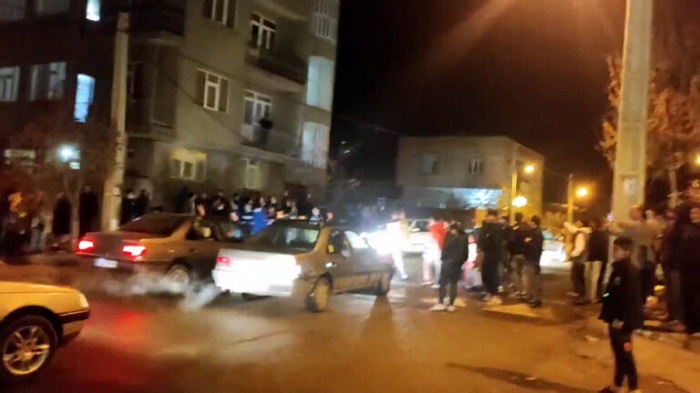
However, amidst the unrest, the mullahs’ regime has launched chemical gas attacks targeting all-girls schools in various cities. The situation is becoming more volatile as people throughout Iran are specifically holding Supreme Leader Ali Khamenei responsible for their misery and condemning the oppressive Islamic Revolutionary Guards Corps (IRGC) and paramilitary Basij units.
Protests have spread across at least 282 cities, resulting in the death of over 750 people, and more than 30,000 arrests by the regime’s forces, according to the Iranian opposition People’s Mojahedin of Iran (PMOI/MEK). Furthermore, the names of 675 protesters who were killed have been published by the MEK.
April 4 – Tabriz, northwest #Iran
An all-girls school has been the target of a chemical gas attack and at least 20 students have been rushed to a hospital.#IranChemicalAttackspic.twitter.com/qdxHsYj1U5— People's Mojahedin Organization of Iran (PMOI/MEK) (@Mojahedineng) April 4, 2023
Reports indicate that the “Hazrate Masoumeh School” in Tabriz, East Azerbaijan Province, has been targeted by a chemical gas attack. At least 20 students have been rushed to the city’s Sina Hospital. In Naqadeh, West Azerbaijan Province, local activists have indicated that Mahdi Elementary School and Moalem High School have been targeted in chemical gas attacks. Additionally, an all-girls school in Dowlat Abad of Isfahan has also been the target of a chemical gas attack.
In the Shahrak-e Bagheri district of Tehran, locals have been chanting anti-regime slogans, including “Down with Khamenei!” Pensioners and retirees of the regime’s Social Security Organization in Ahvaz and Shush, southwest Iran, also held gatherings and launched marches, protesting high prices, inflation, low pensions, and other economic woes. They demanded their rights and chanted slogans criticizing regime President Ebrahim Raisi and his economic policies.
April 5 – Tehran, #Iran
Locals in the Shahr-e-Ziba held a gathering and began chanting anti-regime slogans, including:
"This is the year Seyed Ali (Khamenei) is overthrown!"#IranRevoIutionpic.twitter.com/KhNm3sNKrQ— People's Mojahedin Organization of Iran (PMOI/MEK) (@Mojahedineng) April 5, 2023
Pensioners and retirees are among the worst-hit segments of Iran’s society, depending on government stipends to make ends meet. However, the regime has refused to increase their pensions, despite growing inflation and the depreciation of the national currency.
Similarly, teachers and educators in different cities, such as Firouzeh in Razavi Khorasan Province and Mahmoud Kazemi School in the 2nd District of Hamadan in western Iran, have been protesting poor economic conditions and their low and delayed paychecks.
The situation in Iran is becoming more volatile as protesters continue to voice their anger at the regime’s destructive policies. The Iranian regime’s continued use of chemical gas attacks on schools, and its crackdown on peaceful demonstrations, have been condemned by the international community.
مسمومیت امروز دانش آموزان مدرسه دخترانه #باغمیشه_تبریز
۲۰نفر از دانش آموزان دختر ۱۵ساله دچار علائم بودند، تحت مراقبت کارشناسان اورژانس توسط چهار دستگاه آمبولانس به بیمارستان سینا انتقال یافتند.#مهسا_امینی #مسمومیت_دانش_آموزان pic.twitter.com/41WMiQTbO0— تلویزیون ایران آزادی (@IranAzad_TV) April 4, 2023
The world is watching Iran closely, and many hope that the regime will listen to its people and address their grievances before the situation becomes more dangerous.
 MEK Iran (follow us on Twitter and Facebook), Maryam Rajavi’s on her site, Twitter & Facebook, NCRI (Twitter & Facebook), and People’s Mojahedin Organization of Iran – MEK IRAN – YouTu
MEK Iran (follow us on Twitter and Facebook), Maryam Rajavi’s on her site, Twitter & Facebook, NCRI (Twitter & Facebook), and People’s Mojahedin Organization of Iran – MEK IRAN – YouTu







